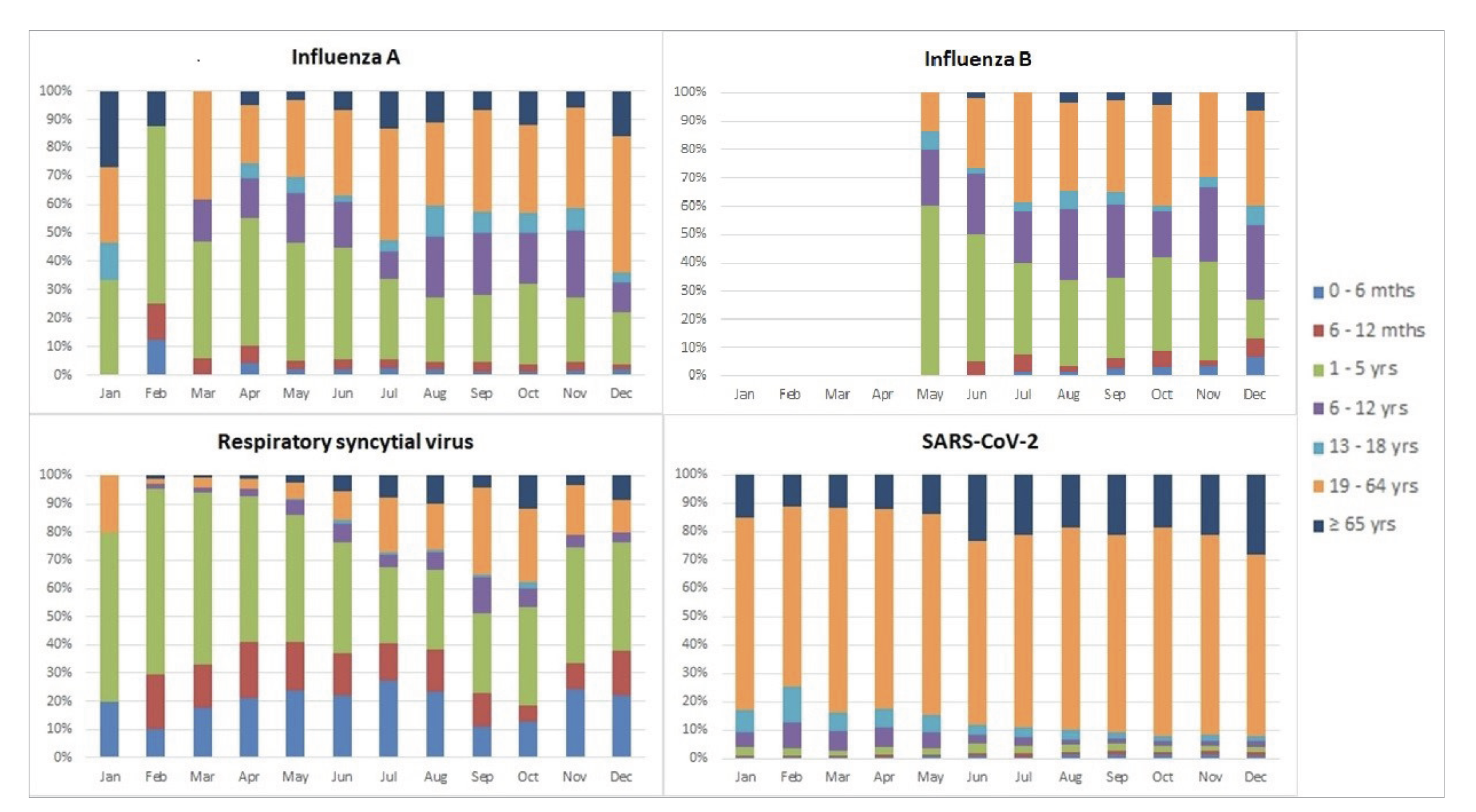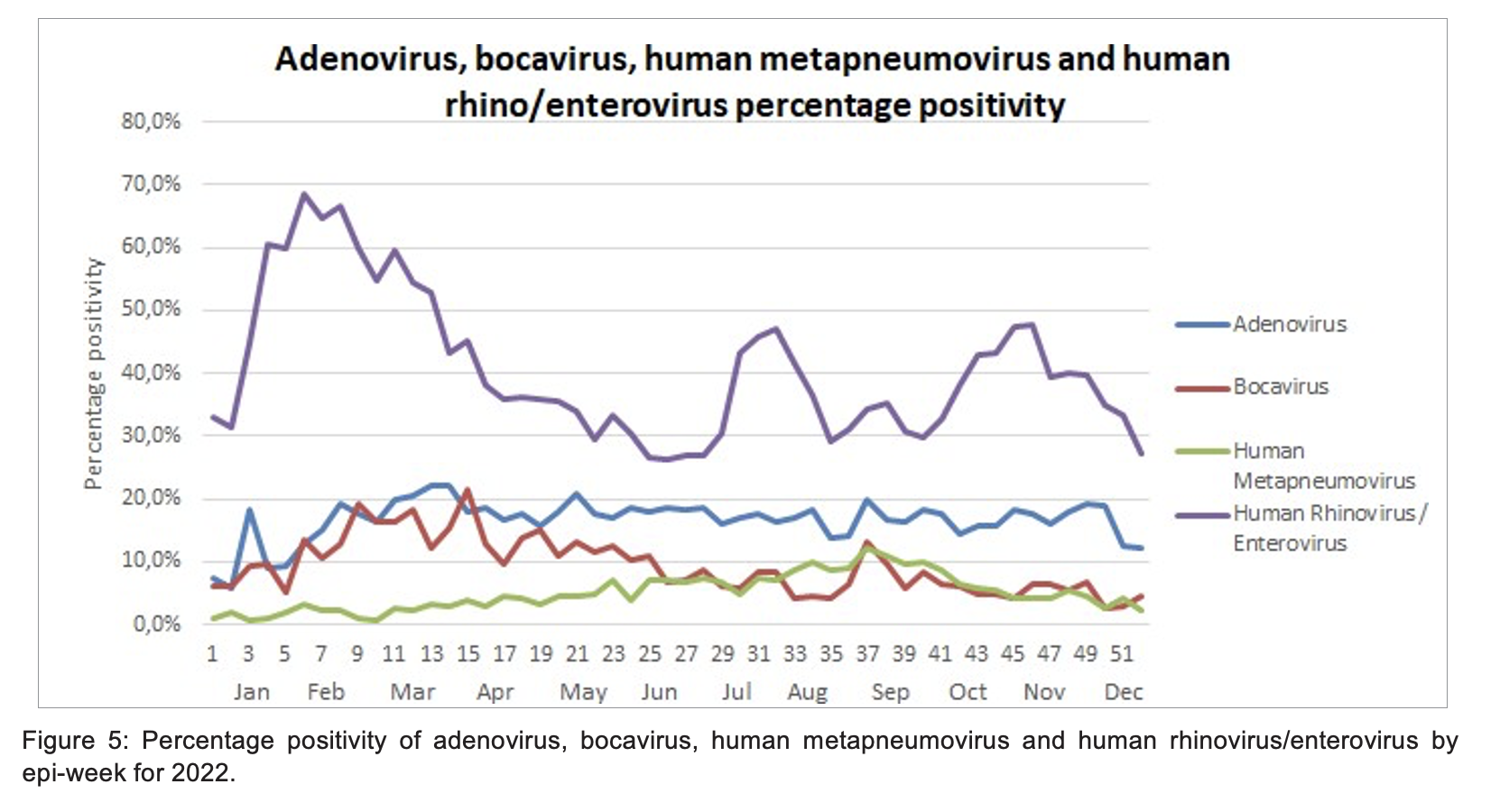INFLUENZA, RESPIRATORY SYNCYTIAL VIRUS AND SARS-COV-2
- Influenza A, influenza B and respiratory syncytial virus (RSV) returned to the characteristic seasonal circulation (Figure 1), having shown atypical patterns in 2020 and 2021. The influenza season showed a biphasic pattern, with influenza A predominating early in the season followed by a smaller influenza B
- The data correlates with the RSV and influenza seasons as defined by the National Institute for Communicable Diseases (NICD) with RSV from week 7 (week starting 14 February) to week 26 and influenza from week 17 (week starting 25 April) until week 42 (week starting 16 October) (NICD Weekly Respiratory Pathogens Report, week 50 of 2022).

Figure 1: Percentage positivity of influenza A, influenza B, respiratory syncytial virus and SARS-CoV-2 by epi-week for 2022.
- In terms of the age distribution of positive samples (Figure 2), RSV detection occurred predominantly in children and infants under 5 years of age, while SARS-CoV-2 positive samples were derived predominantly from adults. Influenza A and B positive samples were more broadly distributed across ages 1-64 years

Figure 2: Age distribution of positive samples by month for influenza A, influenza B, respiratory syncytial virus and SARS-CoV-2 in 2022
CORONAVIRUSES (EXCLUDING SARS-COV-2)
- Circulation of the endemic coronaviruses (229E, HKU1, NL63 and OC43) was noted mainly during the winter months with percentage positivity peaking in August, with OC43 and HKU1 predominating. Rising detection rates of NL63 resulted in a second increase in November/December but remained below 5%.

Figure 4: Percentage positivity of parainfluenza viruses by epi-week for 2022.
ADENOVIRUS, BOCAVIRUS, HUMAN METAPNEUMOVIRUS AND HUMAN RHINO/ENTEROVIRUS
- As expected, less seasonal variation was noted with human rhinovirus/enterovirus and adenovirus Percentage positivity for human rhinovirus/enterovirus remained ≥30% throughout the year.

Credit – THE PATHCARE NEWS

